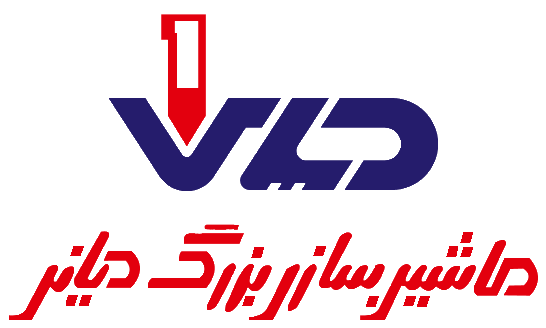History of Industry in Iran
Introduction:
In the past, the people of Iran and many other nations were primarily engaged in agriculture, and industry in the modern sense did not exist. Water and irrigation were crucial for farmers, and drought was one of the biggest challenges. Basic industries like weaponry, weaving, and jewelry-making existed.
Thus, the importance of water and irrigation and the fear of drought were deeply connected to the livelihood of a large portion of Iran’s population and the importance of food security in those years. Other professions beyond agriculture were typically family-owned, passed down from father to son. It was rare for someone to pursue a profession other than the one practiced by their family. This trend applied to most nations and civilizations. The primary industries involved military weapons, agricultural tools, basic spinning tools, food containers, and essential living tools (such as swords, spears, armor, plows, pots, etc.).
Safavid Period:
During the Safavid era, the presence of European merchants and craftsmen gave rise to industry in Iran. However, until the Qajar period, industry in Iran remained minimal. The industrial development began with the Pahlavi era when Reza Shah made efforts to revive Iran’s industry, implementing key measures such as establishing railroads and factories.
Qajar Period:
Following the Safavid period and throughout the Qajar era, industry in Iran remained limited. During the Qajar era, with geopolitical changes around the world (such as Napoleon’s rise and fall and the decline of the Ottoman Empire), Iran’s industry underwent a transformation. The Qajar rulers’ interest in traveling to Europe and witnessing European (Western) growth firsthand, coupled with sending noble families’ children to study in Europe, led to some industries being introduced into Iran.
During the Qajar era, Abbas Mirza, observing the weakness of the Iranian army against its main threat, the Russian Empire, sought to localize the production of guns and cannons within the country. He sent craftsmen to Europe (England) to learn gun production, and manufacturing began in Iran. Additionally, with the help of French and later British engineers, cannon production was initiated in Iran. Under the chancellorship of Amir Kabir, industries were revived, and industrial factories were established across the country. One of Amir Kabir’s first actions was to establish the armory, which still operates in Iran’s Hakimiyeh region under the name “Mechanical Industries.”
In 1852 (1268 AH – 1230 SH), sugar factories were established and began operating in the cities of Sari and Babol, where Mazandaran’s sugar was refined, and white sugar was produced. Other factories such as crystal and porcelain manufacturing in Tehran, sugar refining in Qom and Isfahan, and a power plant in Mashhad, as well as cotton processing in Sabzevar, soap production, brick making, paper manufacturing, rope making in Tehran, and silk weaving in Kashan, were among other industrial establishments.
Amir Kabir aimed to expand and grow the industries by sending artisans to Europe between 1267 and 1275 AH to learn weaving, porcelain making, and papermaking. Amir Kabir also made significant efforts to extract Iran’s mines using European scientific principles and invited Austrian specialists, leading to notable advancements. Additionally, factories were established for cotton ginning, olive oil extraction, and sawmills operated by the Russians, while blacksmith workshops in Azerbaijan were managed by the Germans. Amir Kabir, in addition to producing foreign industries locally, was keen on developing national industries; for example, woolen “chooga” weaving in Mazandaran flourished under his efforts and was even used in military uniforms.
After Amir Kabir’s death, all his plans and projects were abandoned during the entire Qajar reign; industrial growth halted, and the workshops and factories built with great hope and effort were left in ruins.
Pahlavi Period:
The end of the Qajar period saw Iran plagued by devastation, disease, famine, chaos, and ethnic separatism (due to World War I and Ahmad Shah Qajar’s incompetence). Reza Shah initially focused on maintaining territorial integrity and suppressing opposition, later making efforts to revive the nation’s industry.
After establishing a cohesive military and ensuring nationwide security, Reza Shah initiated Iran’s industrial development. The north-south railway (contrary to British interests, which preferred an east-west railway) and the establishment of dozens of production factories, including textile, cement, tobacco, and sugar factories by ministries and governmental organizations, were among his significant actions.
Another major action during the first Pahlavi era was establishing a university in Masjed Soleiman for educating Iranian specialists in oil extraction. During the second Pahlavi era and after the 1953 coup, the country moved towards industrialization. This movement peaked in the 1960s and early 1970s, driven by technocrats, with Ali Akbar Sanjabi leading efforts that achieved an average growth rate of 11.9% during the 1960s (reaching over 16% growth in some consecutive years). Significant support was extended to national industries. Measures such as facilitating industrial machinery imports, restructuring the Ministry of Economy, forming the Industrial Management Organization, and establishing large industrial units like Esfahan Steel, Sar Cheshmeh Copper, Tabriz Tractor Manufacturing, and Arak Machine Manufacturing all occurred in this golden era. However, this era came to an end due to the misplaced pride of the second Pahlavi Shah, who dismissed Sanjabi from the Ministry of Economy.
Post-Revolution Period:
After the Islamic Revolution and due to the eight-year war with Iraq and Iran’s unique circumstances, industry saw a significant decline, accompanied by a drop in economic growth rates. During the 1990s, high market demand led to the success of any manufacturer entering production. The price difference between raw materials and final products was so high that production was economically justified.
In the 2000s, with the influx of Chinese goods, Iranian industrialists faced a large competitor. Cheap Chinese products, coupled with rising raw material costs (due to increased demand in China), present significant challenges for today’s Iranian industrialists.
Since the revolution, Iran’s industry has faced challenges such as war and competition from Chinese imports. Today, Iranian industrialists encounter competition from imported goods and bureaucratic challenges, leading many to prefer trading over producing goods.
